At first glance, it might seem that the autumn season is a vacation for gardeners. This is far from the case. Even in late autumn, there will always be work in the garden and in the country. After all, it is precisely at this time that you need to prepare the land and seeds for the autumn planting. They are planted before winter so that they grow stronger and bloom earlier.
Content
Values of sowing seeds for the winter
Modern gardeners choose just such a sowing, as the chances of getting beautiful healthy flowering crops next season are increasing. There are many advantages of such a landing.
Advantages and disadvantages
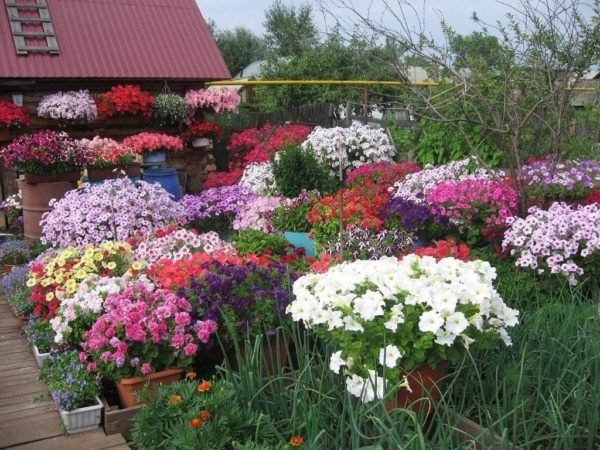 Flowers are planted in the winter for various reasons, this procedure has its advantages:
Flowers are planted in the winter for various reasons, this procedure has its advantages:
- Sprouted plants in spring are much harder and stronger. They are not afraid of frost, resistant to disease. Such plants have a more powerful root system, which is able to receive moisture deep from the ground.
- Germination of the seed occurs in a natural and familiar environment.
- In flowers planted for the winter, an earlier flowering is observed.
- On the windowsills in the spring there is more space, since it is not required to grow seedlings of flowers.
- As a result of natural selection, only strong and strong seeds sprout, so the plants in the end are healthy.
- Due to their strong immunity, pests are not afraid of crops at the initial stage of growth.
- If some of the seeds do not sprout in the spring, then they are still not late to sow.
- Seedlings planted for the winter, in the first year will please flowering.
Why sow flowers in the fall
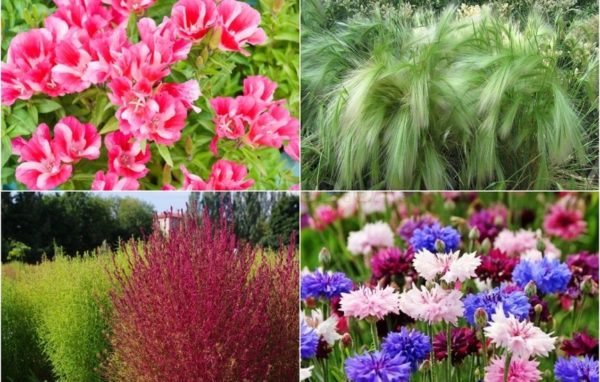 As already noted, seeds planted in the fall are subjected to strict natural selection. Weak planting material will not sprout. But the remaining plants will undergo a good hardening, which will contribute to their beautiful, healthy appearance. Together with weak seeds, harmful bacteria die in winter, which improves the immunity of plants. At the first stages of growth, they are not afraid of pests and many diseases.
As already noted, seeds planted in the fall are subjected to strict natural selection. Weak planting material will not sprout. But the remaining plants will undergo a good hardening, which will contribute to their beautiful, healthy appearance. Together with weak seeds, harmful bacteria die in winter, which improves the immunity of plants. At the first stages of growth, they are not afraid of pests and many diseases.
Also, thanks to the autumn planting, a person will free up time in the spring, because in the fall there are much fewer affairs in the garden.
When landing
Flowers can be planted under winter seeds in the open ground under winter only when the temperature of the ground is below zero. The soil of the open ground should freeze to -4, and the air temperature should not fall below the level of 0. If you plant the seeds in warm soil, then it is highly likely that they will germinate and disappear when frost begins.
The best time to plant seeds in the winter is the end of October, but for warmer regions this period may even be in mid-November.
In early autumn, they plant onion and rhizome annuals.
What flowers are planted before winter
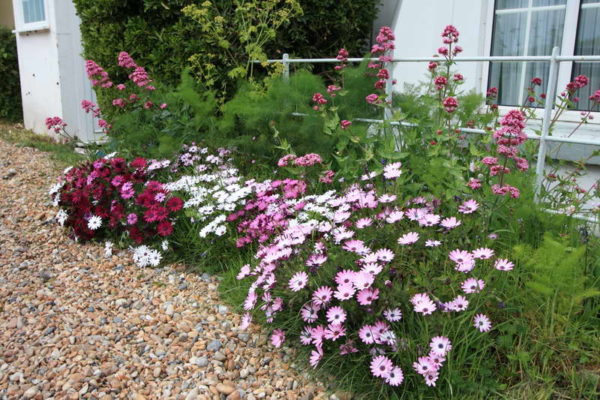
Not all plants should be sown before winter.In the early autumn, bulb crops should be planted, and closer to the end, they sow annual and perennial crops, as well as plants whose seeds need stratification.
Bulbous and rhizome perennials
Most bulb plants plant directly in the early fall, so that in the spring after the snow melts, the flowers gain strength and bloom as early as possible.
|
Title |
Culture Description |
Landing time |
|
Tulips |
The plant has many varieties and species that differ in flowering time, color, shape and coating of the petals. |
End of September - beginning of October |
|
A very beautiful bulbous spring plant that has white or yellow flowers. Early varieties bloom from early May. |
End of August - beginning of October |
|
|
Crocus |
One of the earliest bulbous flowers that blooms immediately after snow melts. The average height is about 15 cm. |
August - early September |
|
Beautiful plant with inflorescence in the form of a brush. It comes in various colors, the height does not exceed 30 cm. |
Since mid September |
|
|
Iris |
A very beautiful plant that, after flowering, does not lose its beauty. The flowering time and the height of the bushes depends on the species and variety. With the right choice of varieties of irises for flower beds, you can organize flowering from early spring to late autumn. |
September October |
|
Muscari |
Low unpretentious plants that delight with beautiful blue or blue flowers from May to June. Height does not exceed 20 cm. | September |
|
Decorative bow (allium) |
Outwardly resembles a regular bow. The inflorescence is represented by a beautiful ball with various colors. Peduncle height reaches 80 cm, blooms from late spring. |
September October |
Annuals
Sowing frost-resistant annuals for the winter should be done after the establishment of frost. Most often, this period falls on the end of October - the beginning of November.
|
Title |
Culture Description |
|
Aster |
Very beautiful blooming flowers, the height of which depends on the variety and reaches from 25 to 90 cm. There is a large selection of colors and fort buds. |
|
Annual phlox |
A small annual (up to 25 cm), which varies in colors and shapes. Unpretentious in leaving and undemanding to soil type. |
|
Anthurium (snapdragon) |
Blooms almost all summer. Depending on the variety, the height varies from 20 to 120 cm. Most often, 50-60 cm are found. Easily propagated by self-sowing. |
|
Plant height is found from 30 to 80 cm. Unpretentious crops with beautiful bright fragrant flowers. |
|
|
Calendula |
A common garden flower with medicinal properties, which does not impose large requirements for care and soil. Height 30-80 cm, depending on the variety. Blooms with beautiful yellow, pink or orange flowers. |
|
cornflower |
Unpretentious bushy annual plant with a height of about 60 cm. Cornflower is unpretentious in maintenance, suitable for decorating flower beds and growing for cutting. |
| Iberis |
A small bush (about 30 cm) blooms with beautiful umbrella caps. Differs in fragrant long flowering. |
|
Eschscholzia |
Low bushes up to 30 cm, which are abundantly covered with flowers. He does not like the seedling method of planting, as it has a rooted root system. |
|
Alissum |
Ground cover plant with a long flowering period (from June to frost). Small flowers have a pronounced aroma. |
|
Lavater |
A bushy plant up to 80 cm, which is not demanding on the conditions of germination and care. Flowers in diameter reach 9 cm. |
|
Cosmea |
A bushy plant with beautiful decorative openwork leaves. The flowers are not too conspicuous, are simple or double. There are many color options. |
Perennial
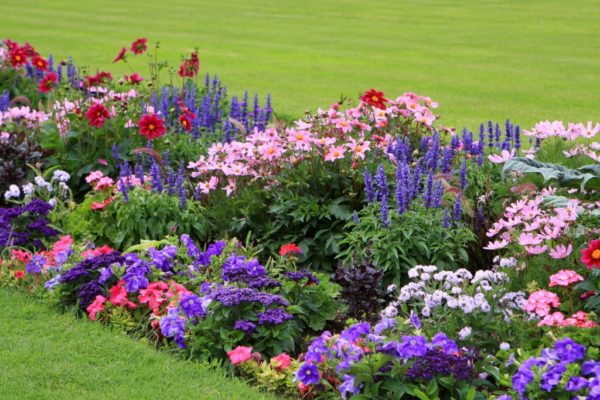 Also have a series of perennial flowersthat can be sown in the winter from the second half of October to mid-November.
Also have a series of perennial flowersthat can be sown in the winter from the second half of October to mid-November.
|
Title |
Plant description |
|
Aquilegia |
Breeders offer a large selection of colors for this small bushy plant, which features a high peduncle. |
|
Delphinium |
Tall perennial, reaching 2 meters. Most often, white-blue coloration of flowers is found. |
|
Mallow |
Grown like a two-year-old plant. Height reaches 1.5-2.5 m. |
|
Primrose |
Small flowering shrubs that bloom in May. Since the seeds quickly lose their germination during storage, it is worth sowing them immediately after ripening. |
|
Rudbeckia |
A very beautiful plant with pubescent leaves. If planted in the fall, it will bloom next year. |
|
Marigold |
Beautiful low flowers with orange or yellow flowers. You can plant the nails once in the fall, and the next year the plant itself is sown. |
They also plant viola, gentian, hellebore, lavender, yarrow and many other crops during the winter. In general, the list of crops that can be planted in autumn is very large.
How to sow seeds before winter
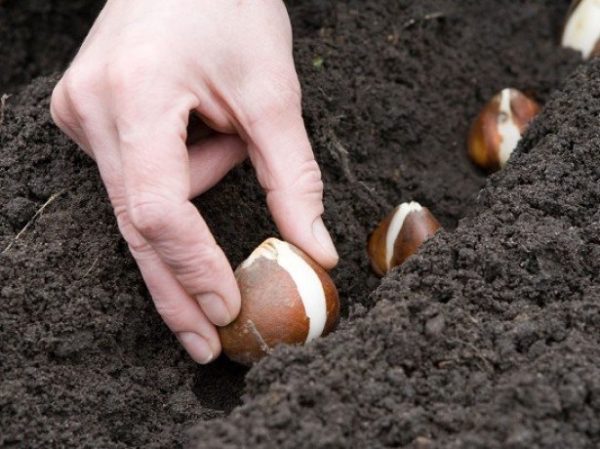 Sowing in the winter is carried out in various ways. To sprout flower seeds in spring, it is important to follow the rules of planting and carefully prepare the soil.
Sowing in the winter is carried out in various ways. To sprout flower seeds in spring, it is important to follow the rules of planting and carefully prepare the soil.
Soil preparation
Preparing the land for planting should be while the soil is still warm, for example, at the beginning - mid-September. The earth is dug up very carefully, all weed roots are removed. In the process of digging, nutrient compounds are added to the soil. Optimal is the introduction of 20 gr per square. saltpeter and 40 gr. superphosphate. It is worth mixing these two substances and adding dry sand. Then the composition is distributed over the surface of the soil. Organic matter may be added, but fresh manure cannot be used.
Landing at a permanent place
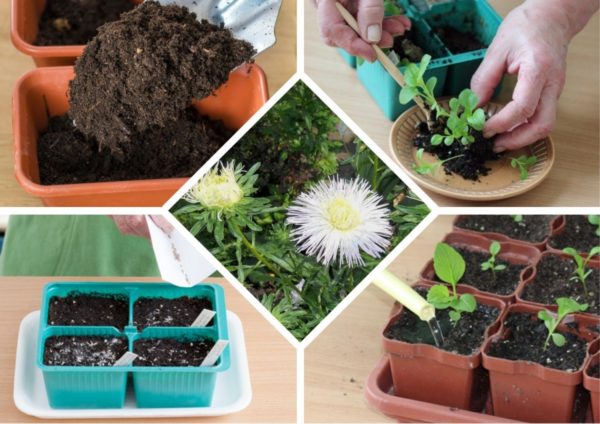 Planting in open ground flower seeds is carried out after the establishment of persistent frost. If you plan to sow flower seeds immediately to a permanent place, it is important to plan the location of individual varieties correctly. High crops are planted in the center, then of medium height, and undersized are located on the edges.
Planting in open ground flower seeds is carried out after the establishment of persistent frost. If you plan to sow flower seeds immediately to a permanent place, it is important to plan the location of individual varieties correctly. High crops are planted in the center, then of medium height, and undersized are located on the edges.
On the ground, grooves are made, which are filled with seeds. When winter sowing seeds take into account that part of the planting material after winter does not rise. If they nevertheless ascend densely in the spring, then at the stage of 2 leaves they can be thinned. Planting depth depends on the size of the planting material, the finer the seeds, the closer they are placed to the surface of the earth.
After sowing, the seeds are lightly covered with a mixture of humus, peat, compost and sand. The beds are not watered, because during the winter they are in hibernation, and in the spring it is enough for the germination of moisture.
Sowing to school
You can plant flowers in the winter in the school (this is a special garden on which special conditions are created for the germination of plants). To exclude spring leaching of plants, it is placed on an elevated place on the south side. The recommended height of the school is 20 cm. When the school is ready at the beginning of September, it is better to close it with foil. Sometimes, even before the start of sowing the seeds, snow falls. From mid-October you can engage in sowing. Several seeds are placed in each well and sprinkled with a nutritious composition. After planting, the schoolhouse is covered with old foliage and spruce branches.
Sowing seeds in a container
Equally sowing seeds for the winter in separate containers. For such purposes, pots with a diameter of about 10 cm will be required. They should have openings for the release of excess moisture. First, a drainage layer is poured (expanded clay is common), then the pots are filled with a nutrient composition. The soil is not poured to the edge, about 2.5 cm is left.The nutritional composition is prepared from land, peat and river sand in a ratio of 2: 2: 1.Pots are filled with a prepared compound, dug in the garden and covered with polyethylene before planting.
When it comes time to plant for the winter, the film is removed, the crops are sown and sprinkled with 2 cm of soil. Then everyone is covered with compost, leaves and spruce branches. When the flowers sprout, thin out them, and after a while transplant them to a permanent place.
Care in the fall, preparation for winter
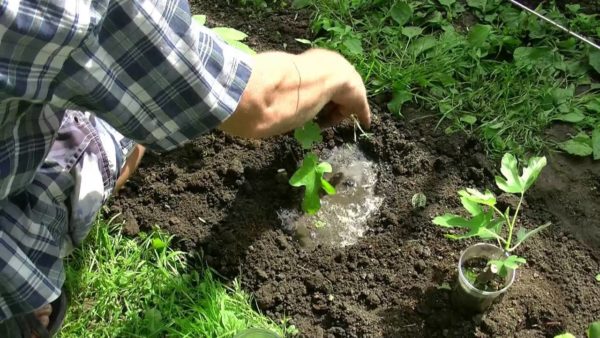 Since the seeds will be in suspended animation all winter, care for them in the autumn is not required. It is recommended, after planting, to fill the beds with dry leaves, and put a spruce top on top so that the foliage does not fly away from the wind.
Since the seeds will be in suspended animation all winter, care for them in the autumn is not required. It is recommended, after planting, to fill the beds with dry leaves, and put a spruce top on top so that the foliage does not fly away from the wind.
Gardeners recommend in the spring, as the snow melts, cover the planting with film. This will prevent the land from drying out. As the shoots appear, the film is removed.
Dangers and mistakes of winter landing
Many gardeners begin to fall-winter planting too early, and this leads to the fact that the sprouts begin to appear in the fall. And in spring there will be nothing to emerge. Therefore, they monitor the timing of planting, plant flowers only after the establishment of frost.
The second no less common mistake is watering the beds after sowing. This should not be done, since cold and water combined will adversely affect the planting material.
Also, you can not plant seeds for the winter in heavy soil with clay. In the spring they will not have enough strength to break through such a dense soil. This will lead to the death of seeds, therefore, for the winter, planting is carried out only in light soil.
Useful tips for gardeners
Over the years of growing flowers, gardeners have gained invaluable experience that should not be ignored.
- After the first seedlings appear, they process flowers to prevent fungal diseases. You can use the first time ash solution (1 tbsp of wood ash is diluted in 10 liters of water). Such a solution will protect against diseases and pests, it is a good fertilizer.
- For growing asters it is better to use a school, and then transplant seedlings to a permanent place. It is worth considering that the aster does not like to grow after daffodils, tulips, carnations and gladioli.
- When the snow melts, you can install metal arcs and cover with a film. This will speed up flowering by 1-2 weeks.
To get a beautiful flowering and grow healthy flowers, it is advisable to plant some of them in the fall. This will help to grow healthy, strong flowers that will delight early flowering. But at the same time, it is important to properly prepare the soil and comply with the timing of planting.

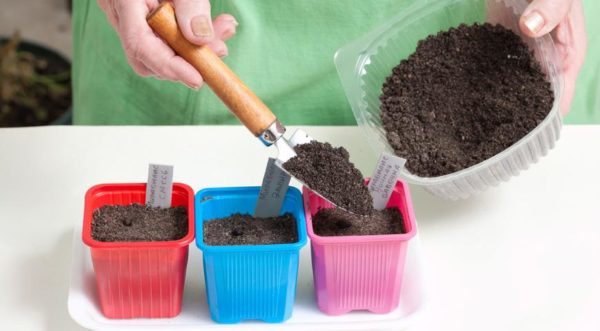



 Sow in the ground, without seedlings: 10 beautiful and unpretentious flowers
Sow in the ground, without seedlings: 10 beautiful and unpretentious flowers Platicodon planting and outdoor care
Platicodon planting and outdoor care Hosta - planting and care in the open ground in the Urals
Hosta - planting and care in the open ground in the Urals Oleander - care and growing at home
Oleander - care and growing at home